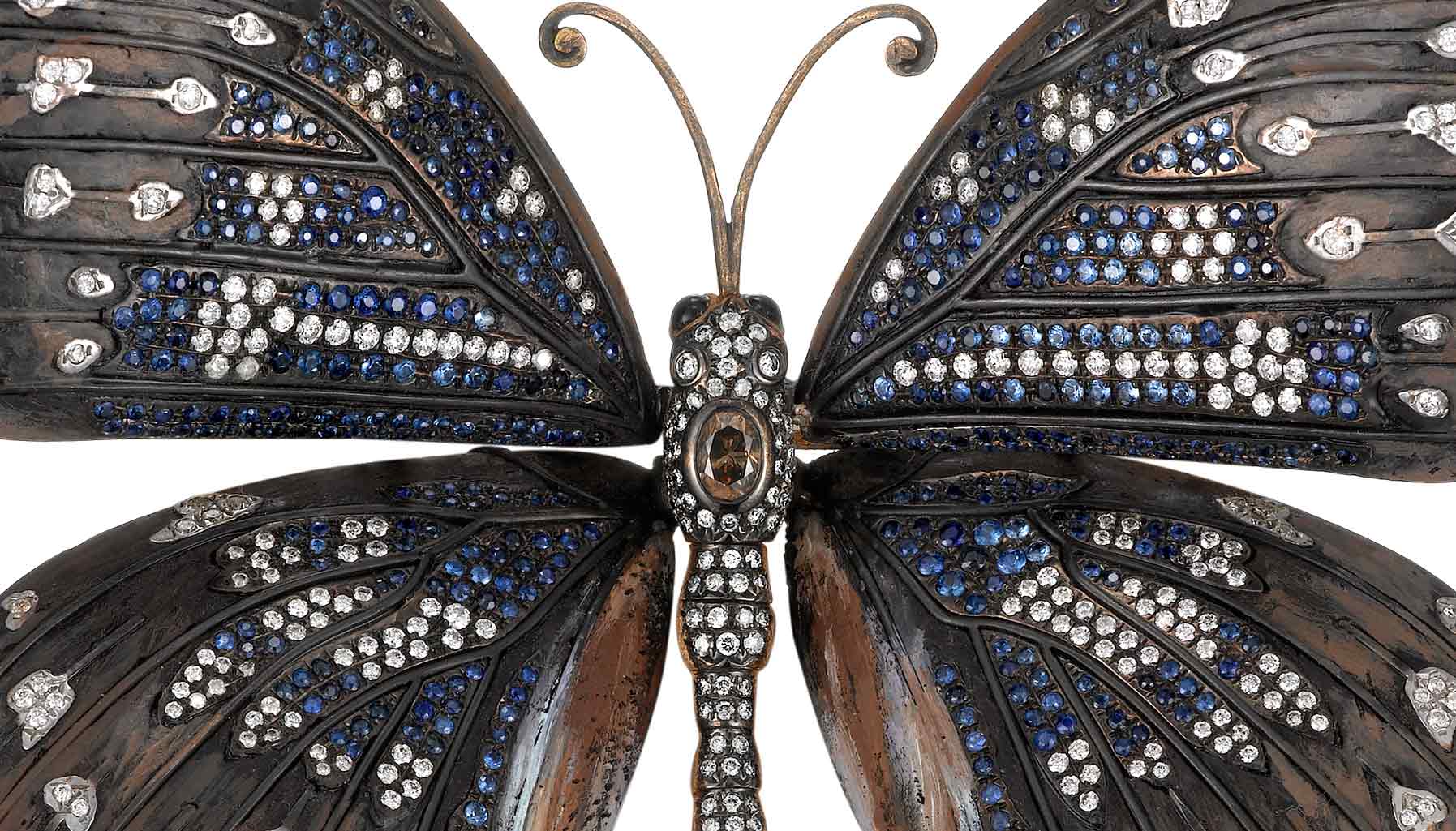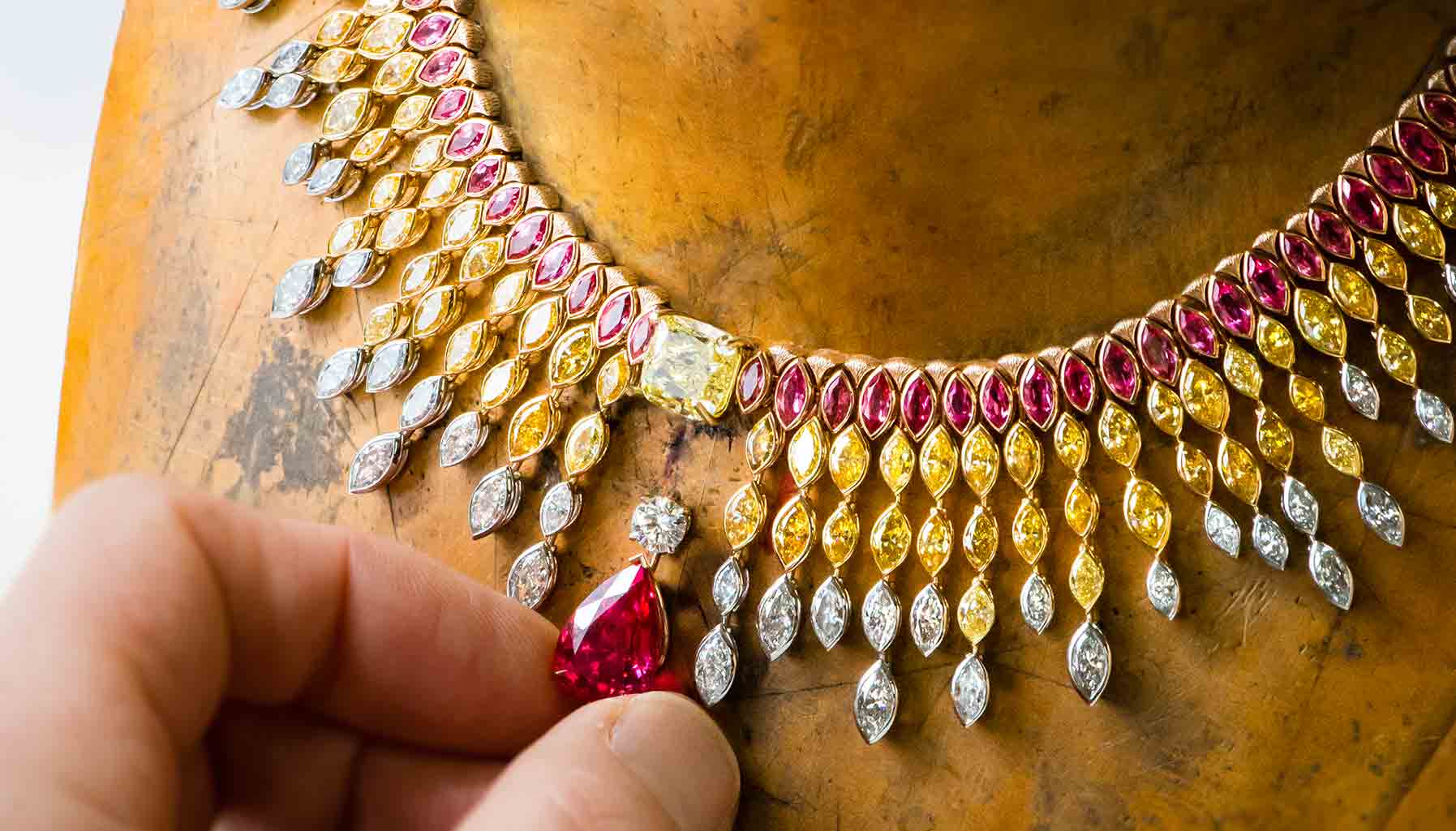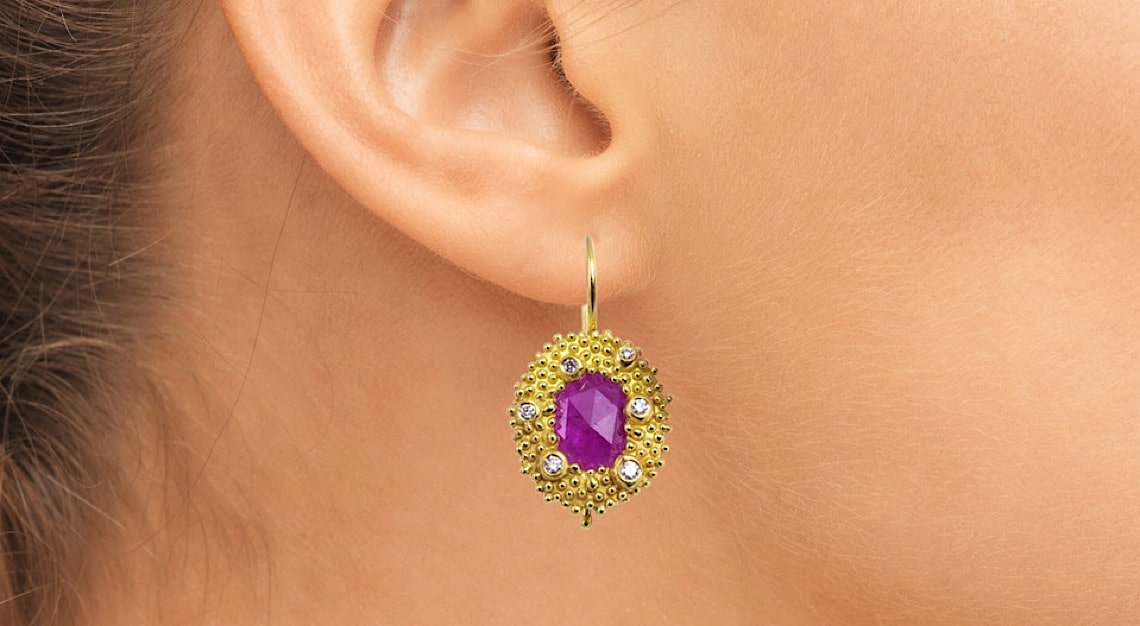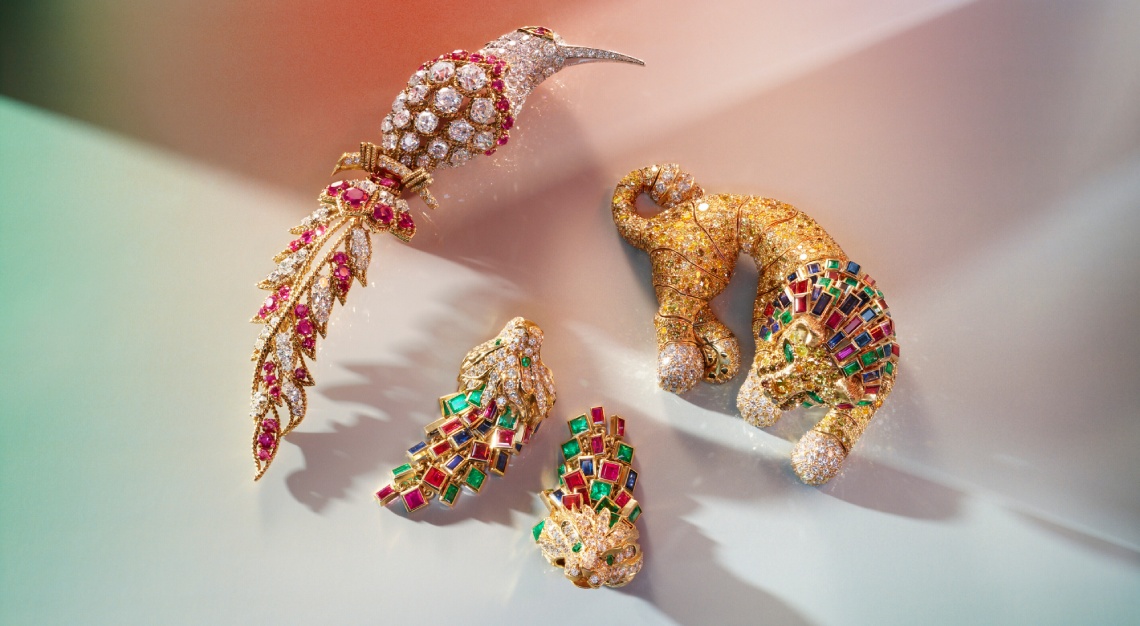Spread those Wings
Beauty is ephemeral; a tough life lesson best exemplified by butterflies, which, on average, flutter into the world on their iridescent wings and out in just a few months. But while beauty may be short-lived, the impression it makes never is. Hong Kong jeweller Dickson Yewn celebrates the fragile beauty of the butterfly with his Dream and Reality series, a collection that will comprise 60 models of the creatures upon completion.
Using the butterfly as a motif in jewellery is not new, but most bejewelled representations are over-decorated with precious gems and show no regard for accurately representing the insect beyond its basic form of a pair of wings and body. Yewn hopes to address this misrepresentation by taking a particularly documentary approach in crafting the butterflies. Each piece is inspired by and modelled closely after a real species, taking into account proportion, size and colour, and is even called by its scientific name. Only eight pieces of each model will be produced. Currently at the count of 29 completed species out of the proposed 60, Yewn has pledged to donate the final piece to a natural history museum.
We take a look at the five butterflies that have set our hearts aflutter.

Teinopalpus Aureus (also known as the Golden Kaiserihind)
Looking at its showy green and yellow colours, there’s no doubt why this butterfly has been nicknamed The Emperor of India. It calls the Eastern Himalayas home and is a high flyer, preferring wooded terrains at 6000 to 10,000 ft elevation. Although protected under Indian law, its beauty makes it popular among butterfly collectors and it is often illegally hunted.

Polyommatus Icarus (also known as Common Blue)
As its name indicates, this is the most widespread blue butterfly in Great Britain and Ireland, the two territories it is native to. Grasslands are its preferred habitat, but it can also be found at coastal dunes, quarries and vegetated manmade environments like golf courses and cemeteries.

Morpho Rhetenor (also known as Cramer’s Blue Morpho)
Native to South American countries like Colombia, Peru and Guyana, the male of this species exhibit one of the most brilliant iridescent blue on its wings of all butterflies. Surprisingly, the blue comes not from pigmentation – in fact, the wings carry no blue pigments at all – but from unique scales that reflect and intensify only the wavelengths of blue light.

Papilio Antimachus (also known as African Giant Swallowtail)
With a wing span of more than 10 inches, and a preference for gliding above rainforest canopies, this native species of central Africa is believed to be the continent’s largest butterfly. The species enjoys the advantage of living without natural predators, because its body contains glycosides, a toxic chemical that can kill if consumed. When disturbed, it sprays a cloud of foul-smelling chemicals, much like a skunk. Despite its arsenal of protective adaptations, scientists believe that the species is threatened due to its popularity with insect collectors.

Inachis Io (also known as Peacock)
This widespread species is commonly seen in Southern Britain, Ireland and even Southern Scandinavia. Its range reaches as far as Asia and it has also been spotted in Japan. Its distinctive spots resemble huge eyes to predators, directing any attacks towards the decoy “face”, so that the body of the butterfly remains unharmed.






